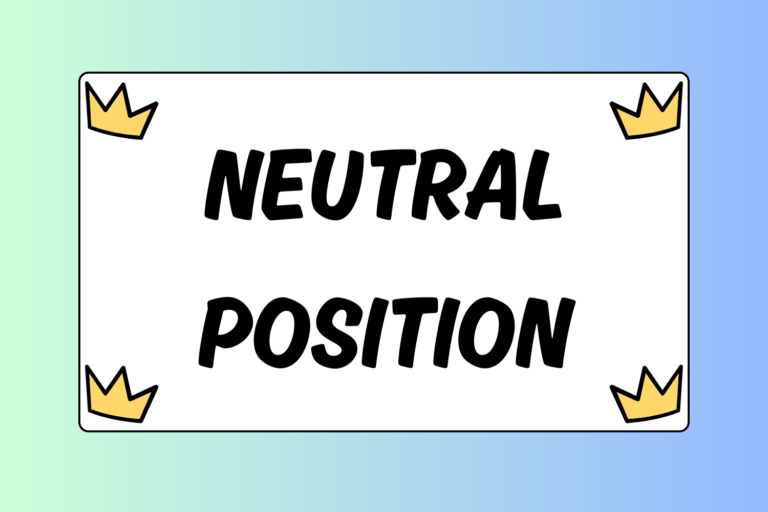All wrestlers should know how to do a gut wrench, especially beginners in freestyle and Greco-Roman wrestling. The gut wrench is a technique that involves the top wrestler in the par terre position to wrap his arms around his opponent’s midsection in order to turn him to his back and score. There are many variations to the gut wrench, but before you can learn the more advanced techniques, you must first understand the fundamentals of the basic gut wrench roll. Read this guide carefully and add this roll to your arsenal of maneuvers in the par terre position.
Step 1: Body Lock
To successfully complete your gut wrench, you first need to secure a tight body lock around your opponent’s midsection to control him through the move. When on top of your opponent in the par terre position, use the butterfly lock to secure your arms around him. (The butterfly lock is the most effective lock for most wrestling techniques.) Make sure to pinch your elbows together firmly, holding your opponent tight to your body. Your body lock should be slightly above or below his belly button — sometimes your hands will reach all the way to your elbows, depending on the length of your arms and the size of your opponent’s midsection.
Step 2: Good Position
With your body lock around your opponent’s midsection, you will want to make sure that both of your bodies are in the correct position before you roll. For the gut wrench, being in good position is as follows:
- Your knees are on the outside of your opponent’s thighs, with your feet positioned on the inside of his legs. Here, you can use your shins to press against the backs of your opponent’s thighs to keep him from basing up or using his legs to defend.
- Make sure you have broken your opponent’s upper body posture; otherwise, he will try to spread his arms and push his upper body off of the mat. Place your forehead between his shoulder blades and use your legs to drive your opponent’s upper body to the mat.
Step 3: Slide your Lock
Next, you need to slide your lock towards the side of the body you want to roll your opponent to. Doing this allows you to control and turn your opponent’s body more efficiently. For the purpose of this guide, you will learn how to roll your opponent to the left.
Before you slide your lock to the left, you will first fake to the right. Keep your hands locked while you move your body to his right side so that you straddle his right leg. This will allow you to adjust your lock by getting your right arm further underneath your opponent’s body. Your hands should be locked just above your opponent’s left hip. Remember to pinch your elbows together tightly and keep your opponent close to your body.
Step 4: Switch Sides
As you are straddling the right side of his body, your opponent will likely lift up into you, opening himself to be rolled to the left. Now you can begin the roll. Switch your lock to the opposite side of your opponent’s body (the left).Do this by pushingoff of your right foot and “jumping” over your opponent’s body with your left leg. Here, touch your left knee to the outside of his left hip. As you do this, turn your head so that your left ear is in the center of your opponent’s shoulder blades.
Step 5: Load Up
Next, you need to “load” your opponent’s hips on top of your hips. This will allow you to control his body so you can complete the roll. To load him up, keep your body lock tight and pull your opponent’s hips on top of yours as you roll to your left side. Drive off of your right leg (which should still be positioned on the right side of his body) to help get his hips on top of yours. From here, keep your left foot on the ground and turn your left knee up toward the ceiling. Your right foot should also be in contact with the mat so that your right knee to the ceiling, as well. Your opponent’s hips should be completely on top of yours in this position.
Hot Tip: Foot Placement
Once you have successfully loaded your opponent on top of your hips, you are ready to drive off of your heels and roll him. In order to get your feet in a good position, keep both your feet in close to your buttocks. This will allow you to generate more power for the roll as you extend your legs.
Step 6: Pop & Arch
Dig your heels into the mat and “pop” (push your hips upwards). As you do this, place your head on the mat and bridge onto the top of your head. Arch your back to put all of your opponent’s weight onto his own shoulders. This is extremely important for two reasons:
- It will keep your back off of the mat and prevent you from being pinned.
- It will help you place your opponent’s shoulders/neck on the mat for a possible pin.
As you arch your back, you must also raise the lock above your head. This will allow you to successfully complete the roll. In other words, you will use the lock you have around your opponent’s midsection to push all of your opponent’s bodyweight onto his shoulders/neck. To do this, keep your lock tight and throw your arms over your head as you arch into the bridge position. You will move this lock from left to right to complete the roll.
Step 7: Roll
After you pop your hips and arch, you can successfully complete the roll. Keep digging your heels into the mat to drive your opponent over to your right side. As you do this, move the lock from over your left shoulder to the right shoulder. This will push his body to the right and as you drive, it will help you complete the roll. Keep driving until you roll your opponent completely back onto his stomach. Then, keep your lock and stay on top of your opponent. Try to roll your opponent as many times as possible for the maximum amount of points.
A Winning Move
The gut wrench is one of the most useful techniques you will learn in freestyle or Greco-Roman wrestling. One of the reasons for this is because there are countless variations of the move, so defending against it can get complicated. Remember the key points of this guide and drill this move to perfection. When you are ready, check out our guide, How to Use a Low Gut in Greco to learn a Greco-specific gut. Now, get drilling!





